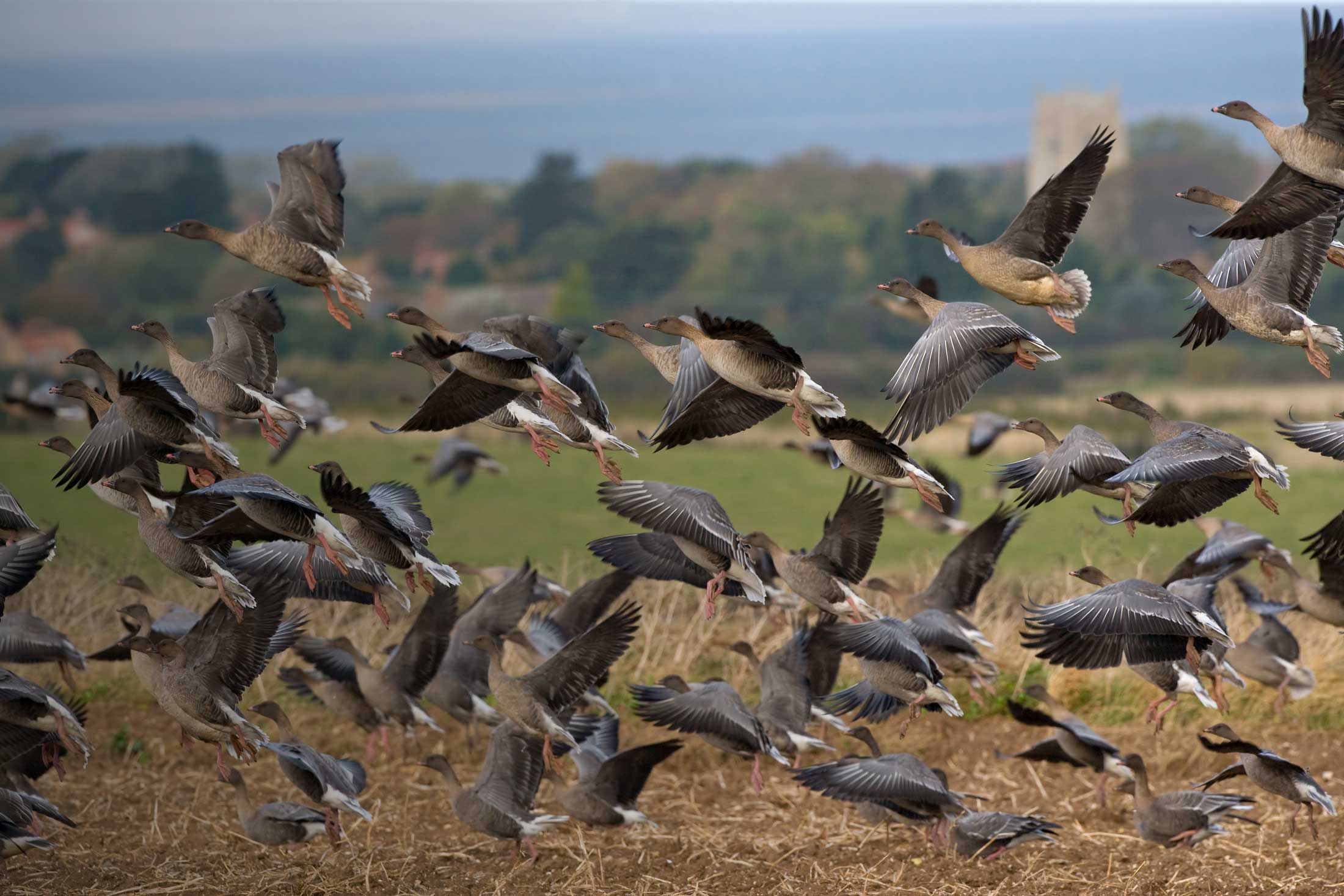
Tackling the challenge of avian influenza
Our Director of Science James Pearce-Higgins discusses highly pathogenic avian influenza and BTO's role in the response to the current outbreak.
James is a member of the Senior Leadership Team at BTO. He is responsible for providing strategic leadership of the organisation’s science.
Relates to projects
We have all been shocked by images of large numbers of dead seabirds at their breeding colonies, or washed up on our beaches, as a result of the current outbreak of highly pathogenic avian influenza (HPAI).
BTO plays a central role in the monitoring and surveillance of bird populations across the UK, and works with a wide range of partners. This means that we are well placed to suggest some priorities for action, so that we can deal with the immediate challenges and determine the impact on already struggling seabird populations.
How we got here
The first reported case of the current outbreak in a wild bird was identified back in October 2021, but the disease really hit the news during winter 2021/22, when over 16,000 Barnacle Geese from the Svalbard breeding population were estimated to have died on the Solway.
Previous outbreaks of HPAI tended to hit wintering waterfowl, and subsided as wintering bird flocks dispersed and left for their breeding grounds. Unusually, on this occasion, the HPAI virus (subtype H5N1) has spread into our globally important colonies of nesting seabirds and is causing unprecedented levels of mortality.
What is highly pathogenic avian influenza?
Highly pathogenic avian influenza (HPAI) is a virus which occurs mainly in birds. There is currently an outbreak of the H5N1 strain in the UK.
The virus is highly contagious among birds, and spreads mainly through contact with infected mucous, saliva or faeces. Symptoms can include reduced breeding productivity, difficulty breathing, digestive issues and death.
You can learn more on our avian influenza page or see our avian influenza health and safety page for specific advice on handling and reporting sick or dead birds.
Learn more about avian influenzaBritain and Ireland support one quarter of Europe’s breeding seabirds, populations which are already threatened by a variety of factors...HPAI is now added to this list of threats.
Britain and Ireland support one quarter of Europe’s breeding seabirds, including over half of the world’s Manx Shearwaters, Northern Gannets and Great Skuas. These populations are already threatened by climate change and include species that BTO has identified as being vulnerable to the large-scale deployment of offshore wind energy, designed to reduce our reliance on fossil fuels and reduce climate change impacts.
Seabirds are also sensitive to changes in fisheries policy and are additionally impacted by non-native mammalian predators at their colonies. HPAI should now be added to this list of threats.

What has BTO been doing in response?
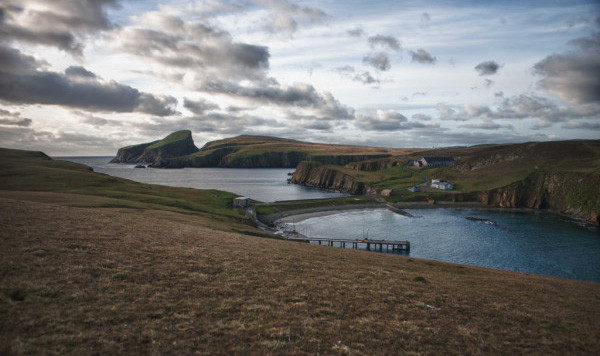
Our immediate response to this emerging situation was to initiate weekly meetings with ornithologists and other staff from the Country Nature Conservation Bodies, Joint Nature Conservation Committee, DEFRA, the Animal and Plant Health Agency and others. One of the key initial concerns was the potential for visitors to seabird colonies, including ringers and other surveyors, to unintentionally spread the virus between individuals or colonies.
The meetings we convened allowed us to work with government bodies who have responsibility for licensing monitoring activities at these sites, and enabled the group to coordinate responses across Britain and Ireland. The group was also able to communicate the implications of the outbreak to BTO volunteers, including the suspension of seabird ringing in Scotland, Northern Ireland and, most recently, the Republic of Ireland, to minimise any accidental increase in spread. The meetings also provide an important mechanism for information exchange between organisations and countries.
Decisions to suspend vital monitoring activities are not without cost. Bird ringing, for example, provides a powerful tool with which to understand the drivers of changes in populations and, therefore, facilitates appropriate targeting of conservation solutions. This is particularly the case for the UK’s seabirds; we urgently need to improve our knowledge of survival rates and breeding success at different colonies so that we can track their responses to environmental change, including to offshore renewables.
We had already identified the need to increase monitoring capacity prior to the outbreak and, supported by our Lost Seabirds Appeal, we have been working to inspire the next generation of seabird enthusiasts, surveyors and ringers through a programme of online training and the support of field-based opportunities. Unfortunately, the restrictions associated with HPAI put paid to many opportunities for people to take part in fieldwork this breeding season.
We have been considering what this outbreak means for long-term monitoring...maintaining, supporting and growing our network of volunteers provides crucial information for a wide array of uses, including the assessment of HPAI impacts.
Developing monitoring programmes to assess impact and recovery
Given these necessary restrictions, we have been considering what this outbreak means for long-term monitoring. Whilst it may not seem the most urgent or headline-grabbing response, crises like this very quickly highlight the need for robust data to understand the situation and inform decision-making.
The information collected by BTO’s army of volunteer birdwatchers, participating in long-term monitoring schemes such as the BTO/JNCC/RSPB Breeding Bird Survey (BBS) or BTO/RSPB/JNCC Wetland Bird Survey (WeBS), is foundational to bird conservation, enabling changes to be identified and tracked, and conservation priorities set, established and tested. Maintaining, supporting and growing our network of volunteers provides a vital service to the wider conservation community and provides crucial information for a wide array of uses, including the assessment of HPAI impacts.
Monitoring the long-term effects of HPAI
Seabirds are long-lived and slow to reproduce, so the impacts may take several years to become apparent in some species.
The Seabird Monitoring Programme will be vital in expanding monitoring coverage over longer timescales.
Read moreThere is now a real urgency to assess the impact that the current outbreak is having on seabird populations. BTO has significant responsibility for such assessment, having just taken on the organisational lead role for the Seabird Monitoring Programme, as part of a new partnership with JNCC and RSPB, supported by Natural England, Natural Resources Wales, NatureScot and the Department of Agriculture, Environment and Rural Affairs, Northern Ireland, and a wider advisory group.
Expanding coverage is a priority, because it will improve our ability to tease out the longer-term effects of the current outbreak; seabirds are long-lived and slow to reproduce, so the impacts may take several years to become apparent in some species.
Estimating the impacts on populations

So far, positive cases of HPAI H5N1 have been confirmed in 61 bird species, including birds of prey and wildfowl as well as seabirds, so we may need to use data from a wide range of monitoring and surveillance schemes if we are to track the impacts across different bird populations.
For example, given last year’s mortality of Svalbard Barnacle Geese, we may pick up further impacts on our internationally important wintering waterbird populations through WeBS and other schemes, such as the Goose and Swan Monitoring Programme.
The same monitoring data will be essential if we are to determine the number of birds that have survived this outbreak, and track any ongoing impact on populations. This information will be used to update assessments of species’ conservation status; we might expect some of our breeding seabird species, such as Great Skua and Northern Gannet – both of which are exhibiting high levels of mortality - to now be at increased risk of global extinction.
Information about where remaining populations are concentrated should also inform national Seabird Conservation Strategies and will be needed by conservation organisations as they write and update their management and conservation action plans to support population recovery. Achieving recovery is likely to require a concerted effort across the conservation sector for years to come, supported by significant levels of funding.
The new Migration Mapping Tool reveals the migratory movements of 50 bird species in Europe, allowing researchers to predict the spread of diseases such as HPAI between migrating populations.
Explore the Migration Mapping ToolImproving our understanding of HPAI
Managing wildlife disease is challenging. Given the level of impact which this current outbreak already seems to have caused, we need to learn from the last few months and use this knowledge to inform future responses to avian influenza and other diseases.
Improving our understanding of how the virus spreads and why particular colonies and species appear particularly vulnerable will be important. It will also be helpful to understand how effective different mitigation strategies may be; do measures such as restricting human access to colonies or the rapid collection of infected carcasses reduce the risk of onward transmission?
We also need to develop tools to inform future planning and decision-making. Through a collaboration between EURING and EuroBirdPortal, funded by the European Food Safety Authority (EFSA), BTO has recently developed a migration mapping tool to inform the management of future Avian Influenza outbreaks.
This approach is now being extended to develop predictive models of AI spread in domestic birds based on wild bird abundance and movements across Europe. Initial results are encouraging, and may offer approaches that can be applied to disease spread in wild birds in the future.
With gulls suggested by some as a potential vector for transmission between populations and seasons, one key knowledge gap is around the abundance and distribution of UK gull populations in winter. These were last surveyed in 2003/4 to 2005/6 and repeating these surveys would provide much-needed contemporary information for understanding current risks.
to increase the evidence base for research, and inform conservation action
Find out moreThe ongoing HPAI outbreak has posed a significant challenge to the conservation sector in the UK and beyond. We are dealing with an unprecedented outbreak in wild birds, which has required a rapid and coordinated response across countries.
In the longer term, this coordination and collaboration between organisations will need to continue in monitoring and research, so that we can determine the impact that the outbreak has had upon wild bird populations and inform the future conservation management of remaining populations.
This outbreak is ongoing at the time of writing, and we await the arrival of new waves of migrants to our shores with a degree of trepidation. Whatever the future holds, the continued collection of data - where it can be carried out safely and without risk to people or birds - will continue to be vitally important.
So if you can, please do continue to support and take part in our schemes, and if you are out birdwatching, please consider submitting your sightings to BirdTrack, where they can rapidly be made available for research and inform conservation action.

Monitoring the impacts of a deadly outbreak
With your support, we can help devastated bird populations recover.
Donate to the Avian Influenza Appeal today


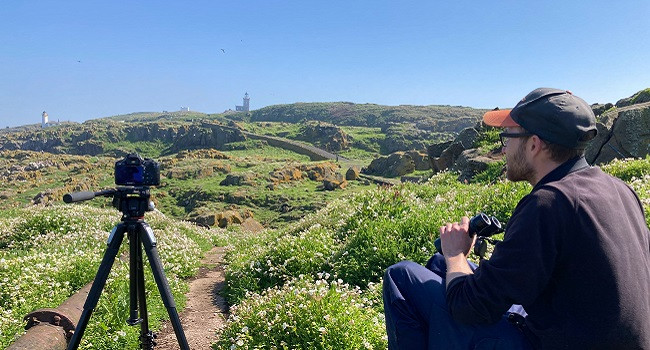
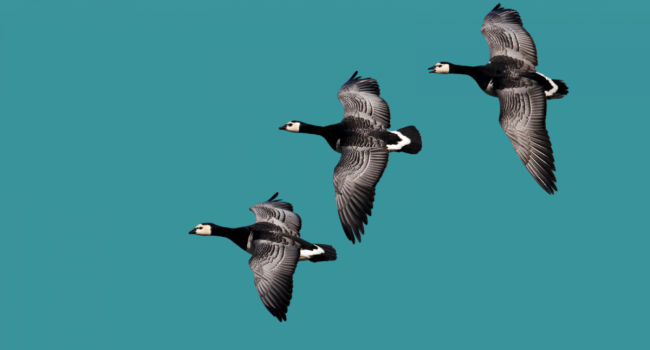
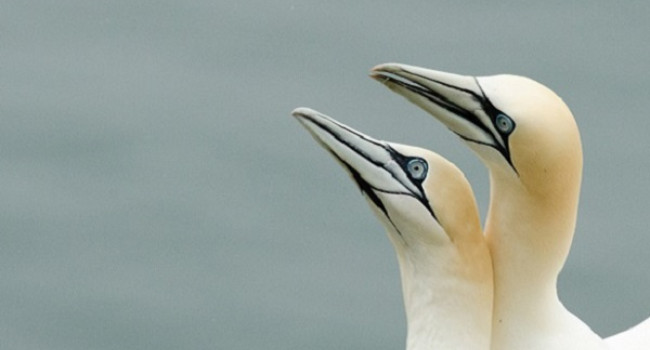

Share this page